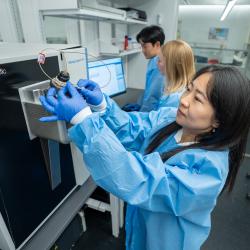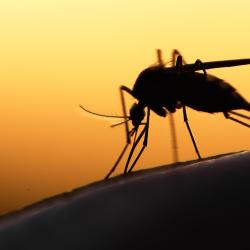New Method Identifies Genetic Factors That Could Contribute to Risk for Heart Disease
UMD-led team uses bioinformatics to identify causative relationships
Cardiovascular diseases kill more people every year worldwide than any other cause of death, according to the World Health Organization. Scientists have long known that family history plays a role in these diseases, but it has been difficult to pin down which genes can predispose humans to cardiovascular conditions. In addition, sections of non-coding DNA can play an important role in turning a given gene on or off.
A team led by researchers at the University of Maryland has taken a big step, by developing a new method that can identify genetic factors within these sections of non-coding DNA that disrupt the normal function of genes, and thus could contribute to risk for cardiovascular disease.
As described in the October 12, 2015 online edition of the journal Nature Communications, the new method moves beyond mere statistical associations, incorporating knowledge of the molecular mechanisms of gene regulation to determine which non-coding genetic variants could regulate gene expression in healthy and diseased hearts.
“There are three basic questions to ask when looking at non-coding DNA sequence to determine disease causation,” said study co-author Sridhar Hannenhalli, a professor of cell biology and molecular genetics at UMD. “First, does the non-coding sequence have a basic regulatory function? Second, is it close enough to the gene to have an effect? Finally, does a disruption in the non-coding sequence also disrupt expression of the gene? If all are true, it is likely there is a causative relationship.”
“Our method addresses these questions much better than the current state of the art,” added Hannenhalli, who also has a joint appointment in the Center for Bioinformatics and Computational Biology at the University of Maryland Institute for Advanced Computer Studies (UMIACS). “It is the first model-based approach that incorporates both genomic and epigenomic data as well as knowledge of the biology of gene regulation in order to predict genetic factors that could cause disease.”
Hannenhalli and his colleagues, including lead author and UMD computer science graduate student Avinash Das Sahu, gathered data from hundreds of individuals with either healthy or failing hearts, and used their new method to identify nearly 2,000 instances of single-nucleotide polymorphisms (SNPs, often pronounced “snips”) that affect gene activity. SNPs are specific locations in the genetic code that vary by one single nucleotide—the base molecules signified by the letters A, C, T and G.
Hannenhalli and his colleagues then performed more detailed functional analyses to estimate that about 58 percent of the identified SNPs were highly likely to affect gene expression in the heart, and thus could have a causative role in cardiovascular disease. In effect, the new method serves as a proverbial magnet to help find potentially dangerous needles in the haystack of human genetic variations.
“What do the gene expression profiles of healthy and non-healthy people look like? As a byproduct of what we’ve already done, we can statistically distinguish healthy people from people with diseases by just looking at their genetic profile,” Hannenhalli explained. “Farther into the future, we might reach a point where we can offer personalized medicine based on genetic information. How can a drug change gene expression? Will a given drug have a positive or negative effect? This idea is somewhat futuristic, but we are working toward it.”
###
In addition to Hannenhalli and Sahu, study co-authors included researchers from the University of Pennsylvania, the Cleveland Clinic and Children’s Hospital of Philadelphia.
This research was supported by the National Institutes of Health. The content of this article does not necessarily reflect the views of this organization.
The research paper, “Bayesian integration of genetics and epigenetics detects putatively causal SNPs underlying expression variability,” Avinash Das, Michael Morley, Christine Moravec, W. H. Wilson Tang, Hakon Hakonarson, MAGNet Consortium, Kenneth Margulies, Thomas Cappola, Shane Jensen, and Sridhar Hannenhalli, was published online October 12, 2015 in the journal Nature Communications.







